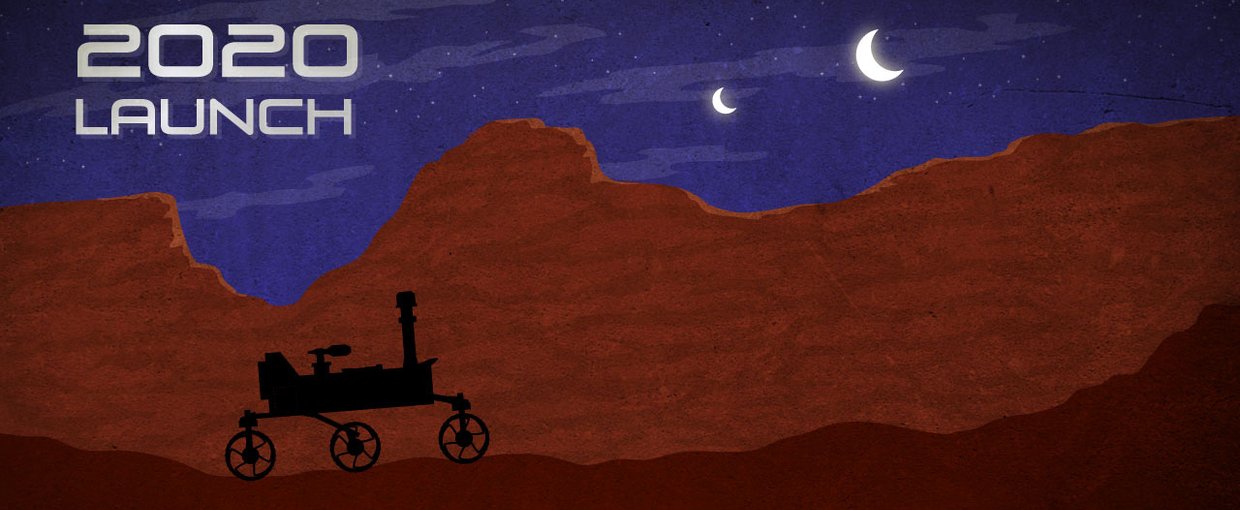Written byAaron GronstalSource
NASA Astrobiology

The NASA Astrobiology Program has released the 2015 Astrobiology Strategy, a document that identifies priorities for research at the program for the coming decade. For the past two years, eight hundred members of the astrobiology community contributed to the effort to define a strategy for research that encompasses the goals of astrobiology in line with NASA missions and objectives.
Astrobiology is the study of the origin, evolution, and distribution of life in the universe. NASA’s Astrobiology Program addresses three questions: How does life begin and evolve? Is there life beyond Earth and, if so, how can we detect it? What is the future of life in the universe?

2015 Astrobiology Strategic Plan.Image credit: NASA Astrobiology.
Building a Strategy
The strategy was developed through a series of in person meetings, white papers, webinars, and reviews. Documentation of the process can be found at http://astrobiologyfuture.org
The Strategic Plan enterprise was launched on May 6, 2013, with the first in a series of five hour-long webinars, each broadly focused on a topic connected to the 2008 NASA Astrobiology Roadmap, but aimed at astrobiology’s future. Following each of these NASA PI-led webinars, over 500 members of the astrobiology community engaged in a spirited, week long, on-line debate that produced a rich record of controversy and critical knowledge gaps.
The second stage of Strategic Plan-making was launched the week of June 17, 2013. Under the auspices of the National Research Council, 60 scientists gathered for four days at the Wallops Flight Facility in Wallops Island, VA. The goal of the gathering was to build, by brainstorming, argument, and consensus, a collection of working documents, each focused on a broad research theme that could be easily explained and justified. These documents were then broken down into sets of sub-questions, any one or combination of which would provoke further community input, or even stimulate a specific research project.
The output of the June face-to-face Strategic Plan enterprise was 21 working documents that encompassed research themes as diverse as:
- How did bio-relevant elements evolve into molecules?
- How can we best overcome our ignorance about microbial life on Earth?
- How would we find and identify an inhabited planet?
- How can we enhance the utility of biosignatures as a tool to search for life in the Solar System and beyond?
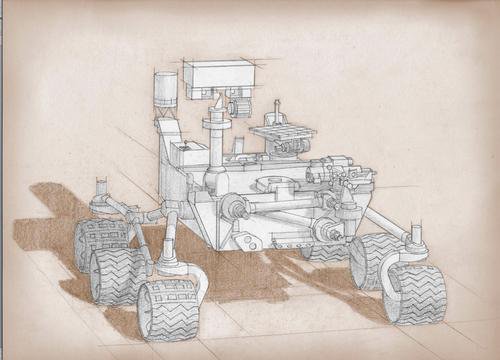
This artist's sketch of Mars 2020 is based on the Curiosity rover in NASA's Mars Science Laboratory mission. The 2015 Astrobiology Strategy outlines goals and objectives for astrobiology research that will play an important role in upcoming missions like Mars 2020.Image credit: NASA/JPL-Caltech .
The next step in the creation of the new Strategic Plan was to move the process back online. The 21 working documents were published on the astrobiologyfuture.org website in September of 2013, and the astrobiology community was invited to review them. One webinar was held for each document, after which community members were allowed to provide comments. Community members were also able to add additional documents if there was a compelling argument for gaps in the existing documents.
In January/February of 2014, authors of the working documents incorporated the community’s comments into these documents, and at a face-to-face integration workshop in late February, these 21 documents were condensed into a set of 6 chapters – the basis of a first draft of the Strategic Plan. This draft was reviewed by the Planetary Science Subcommittee of the NASA Advisory Council and an ad hoc committee of the National Research Council. The process culminated in the release of the 2015 Astrobiology Strategy.
Astrobiology Future
Mary Voytek, the Senior Scientist for Astrobiology, and Michael New, the Astrobiology Discipline Scientist, described the goal of the endeavor to create an “inspirational and aspirational” document. The 2015 Astrobiology Strategy now replaces the 2008 Astrobiology Roadmap as a guide to the next decade of astrobiology research at NASA, and provides a framework for how this research relates to NASA’s strategic objective in planetary science: “to determine the content, origin, and evolution of the Solar System and the potential for life elsewhere (2014 NASA Science Plan).”
Members of the astrobiology community collaborated in an intensive process of defining goals and objectives, and identified six major topics of research in the field today:
Identifying Abiotic Sources of Organic Compounds
Where did the building blocks of life come from? A major goal of research on this topic in astrobiology is to understand how the abiotic (non-biological) production of small molecules led to the production of large and more complex molecules, prebiotic chemistry, and the origin of life on Earth. This line of research also aims to understand what roles primitive icy bodies (asteroids and comets) play in the origin of life on habitable planets and whether life or prebiotic chemistry could or did evolve on differentiated (altered) icy worlds such as Enceladus, Europa, and Titan. Understanding the production of molecules in various endogenous (planetary) environments, as well as in exogenous (space) environments with the associated delivery of extraterrestrial molecules to planetary surfaces, is critical for establishing the inventory of ingredients from which life originated on Earth.
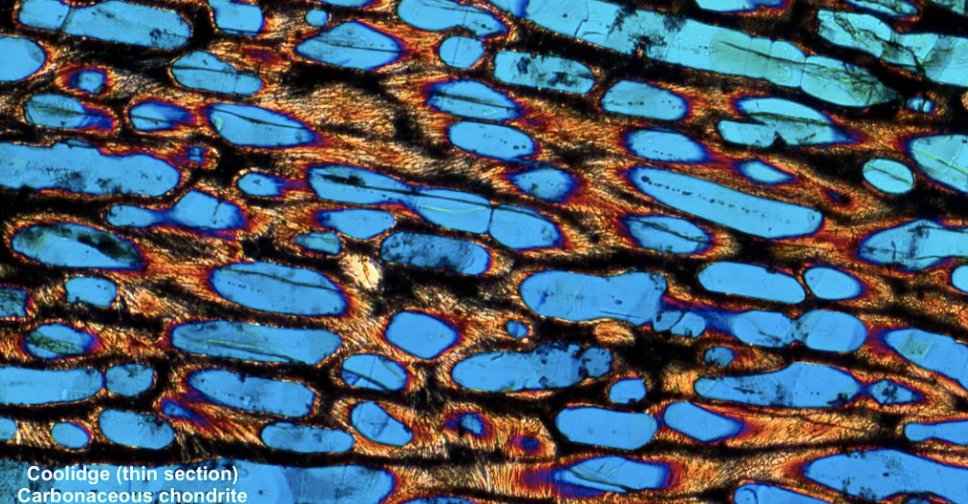
Carbonaceous chondrites are well known to have a rich inventory of organics. Above is a thin section of carbonaceous chondrite. Image credit: Photo by L. Garvie/ASU. Courtesy of the Center for Meteorite Studies.
Synthesis and Function of Macromolecules in the Origin of Life
On Earth, macromolecules—specifically, proteins and nucleic acids—form the catalytic and genetic means for life to sustain itself. These macromolecules are uniquely capable of the structural, catalytic, and genetic functions required for life. From a broader perspective, these polymers can be seen not only as the information- and function- carrying molecules in life on Earth but also as information- and function-carrying molecules for life on any planet. As such, questions of whether and how polymers transmit information and fold to generate function are of interest. To further refine understanding of life’s origins and early chemical evolution, researchers must continue to map the chemical landscape of potential primordial informational polymers. The advent of polymers that could replicate, store genetic information, and exhibit properties subject to selection likely was a critical step in the emergence of prebiotic chemical evolution. Astrobiologists thus must focus on developing an understanding of macromolecule synthesis, stability, and function in the context of plausible prebiotic conditions and environments.
Early Life and Increasing Complexity
Understanding the history of life on Earth is key to a full understanding of what life is and how it works. Astrobiologists face the challenge of deciphering overarching rules for evolutionary processes, drawing on theory and observation to make a general model of life. Recognizing life on other planets depends on how scientists define life. However, defining life has proved problematic because it is unclear where to draw the boundary between living and non-living entities, or whether drawing such a boundary is the best way to frame the issue. The lack of a precise boundary between living and non-living entities today mirrors a similarly fuzzy divide at the origin of life. Identifying which attributes of life are likely to be common to all origins, and which are context-dependent, will enable better predictions about the possible nature of life on other planets.
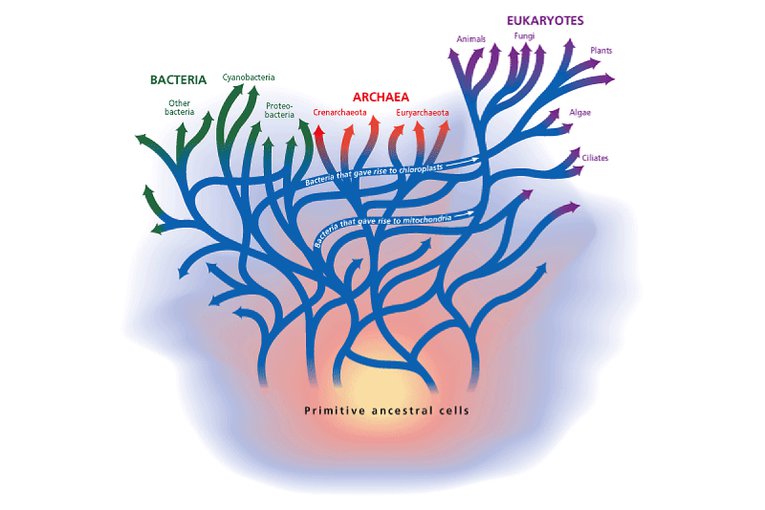
Uprooted Tree of Life, where LUCA is a population of organisms. Image credit: From Teske and Edwards 2005. Illustration by Jayne Doucette, WHOI.
Co-Evolution of Life and the Physical Environment
Life affects its environment. At the same time, the environment affects life. Astrobiologists are focused on understanding the relationship between life and environment well enough to inform the search for potentially habitable environments beyond Earth. Studying the co-evolution of life and environment informs other lines of research in astrobiology in three major ways. First, the delivery of abiotic organic compounds to Earth and the development of prebiotic chemistry on Earth can be thought of as the first environmental influences on life. Second, as early life evolved increasing complexity, its interactions with the planet would have increased in diversity, eventually developing into complex feedback systems. Studying Earth’s co-evolutionary past can improve understanding of habitability on Earth and Earth-like planets. Third, studies of other planets—both real and hypothetical—inform and benefit from work on the intimate interactions between life and its physical environment.
Identifying, Exploring, and Characterizing Environments for Habitability and Biosignatures
Identifying and characterizing habitable or inhabited environments requires the synthesis of information from a large range of spatial scales. Astrobiologists are focused on the goal of determining whether a particular environment was or is presently habitable and whether it was or is able to generate and support life. The aim is to understand how habitable worlds and environments form and evolve, better understand the range of parameters that influence habitability, and determine how to detect, confirm, and characterize habitable environments.

Images mosaic of Europa's southern hemisphere. Brown ridges extending across the scene are thought to be frozen remnants of cryovolcanic activity. Cryovolcanoes occur when liquid or partially frozen water erupts onto the surface, freezing instantly.Image credit: Science@NASA Headline News 1998..
Constructing Habitable Worlds
Earth is the only inhabited world we know thus far. Missions to explore other worlds are searching for others. In addition to Solar System bodies, astrobiologists now have a growing catalogue of planets orbiting other stars to explore as potentially habitable, all with diverse and potentially exotic chemistries and environments. They now face the challenge of determining whether limited experience with habitability, on Earth alone, has limited understanding of the basic set of requirements for a habitable world or whether this experience serves as a helpful guide for the search for life beyond Earth. Habitability has been defined as the potential of an environment (past or present) to support life of any kind. Liquid water is a necessary but not sufficient condition for life as we know it. Habitability is a function of a multitude of environmental parameters whose study is biased by the effects that biology has on these parameters. Habitability provides the context for understanding possible signs for life. A deeper understanding of habitability provides context for interpreting the significance of presumed biosignatures, or their absence.
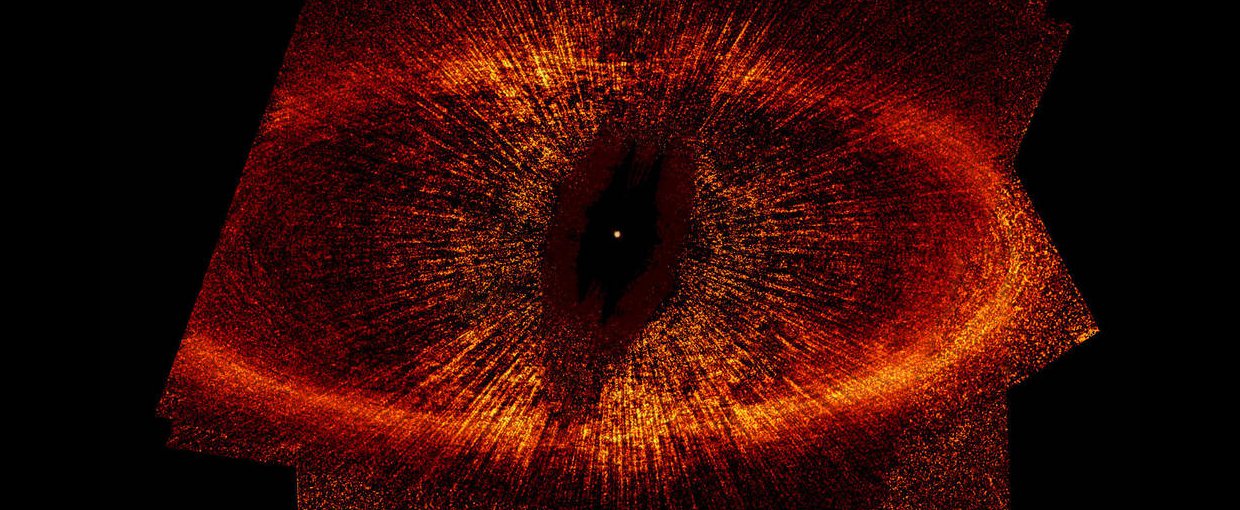
Produced by NASA's Hubble Space Telescope, this is the most detailed visible-light image ever taken of a narrow, dusty ring around the nearby star, Fomalhaut, and offers the strongest evidence yet that an unruly and unseen planet may be gravitationally tuImage credit: NASA, ESA, P. Kalas and J. Graham (University of California, Berkeley) and M. Clampin (NASA/GSFC).
Given NASA’s focus on the search for planets and life, astrobiology is at the center of a growing number of Solar System exploration missions. Astrobiology research sponsored by NASA will continue pushing science closer to answering the Big Questions in space science: Where did we come from? Where are we going? And are we alone?
A pdf of the 2015 Astrobiology Strategy is available here.


